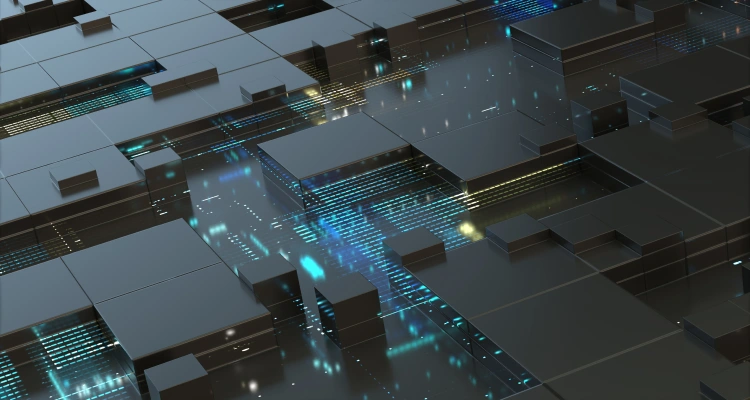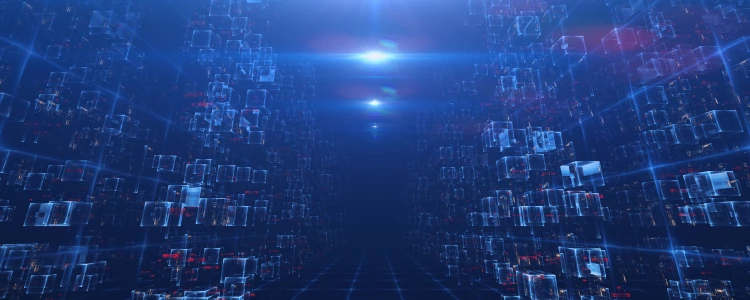VDI vs VM: What are the differences?

The two most common virtualization technologies are virtual desktop infrastructure (VDI) and virtual machines (VM). It is true that these two virtual technologies have indeed been around for a very long time. However, the traction that has come from these technologies has demanded that other virtual technologies become more affordable, scalable, and secure, to help them gain traction. Read on to learn more about the benefits and drawbacks of each of these solutions, as well as prominent use cases for each. We’ll provide advice to help you choose the right cloud server hosting service for your Virtual Desktop Infrastructure (VDI) or Virtual Machine (VM).

What is Virtual Desktop Infrastructure?
Now, let’s look at VDI as a solution and what it is all about. VDI separates the associated software, or the underlined infrastructure, from its physical client device and moves to remote virtual desktop environment.
VDI is a cutting-edge technology that uses virtual machines to manage and provide virtual desktops. It is a technology that creates a virtualized environment on a remote server setup and allows you to access your virtual desktops remotely.
What are the types of VDI?
Persistent VDI
A persistent virtual desktop is a remote desktop virtualization that enables users to customize their own personal desktop environments and saves their progress for future use like the traditional desktop, which is useful for work and school environments.
Non-Persistent VDI
A non-persistent virtual desktop provides a pool of uniform desktops that users can access when needed. Non-persistent VDI is common in call centers, kiosks, computer labs, and public libraries. It is an environment where users do not need personalization and do not want their personal information stored on an external PC.
How was VDI created?
VDI was created as a way to deal with the changing needs of modern settings and the problems that come with holding and providing desktop environments. The idea behind VDI goes back to the early 2000s when virtualization technology allowed it to grow.
VDI was established by combining virtualization with desktop computing. Virtualization, which gained popularity with hypervisor technology, abstracted computer resources from physical hardware. Thanks to this breakthrough, VMs allowed several operating systems to operate on a single physical server.
Simultaneously, the traditional desktop computing model faced scalability, security, and flexibility challenges. Managing individual desktops proved cumbersome, especially as organizations grew in size and complexity. It became apparent that there was a need for a more centralized and efficient approach to desktop management.
In VDI, a central server infrastructure hosts multiple virtual desktops distributed to end-user devices across a network. Centralization simplifies administration, improves security, and increases device support flexibility.
Over time, VDI technology has improved graphics capability, performance, and cloud integration. VDI modernizes desktop infrastructure and provides a scalable and effective alternative for optimizing desktop management.

What is a Virtual Machine?
VMs are virtual computers within a physical one, using hypervisor software. The hypervisor manages isolated environments, including virtualized components like CPU and memory.
VMs let you run multiple operating systems on a single machine, aiding in server consolidation and resource efficiency. It can be tested on multiple operating systems. They’re easily created, cloned, and moved between servers for flexibility and scalability. This virtualization enhances security by isolating workloads, preventing issues in one VM from affecting others. VMs are crucial for software testing and development, offering a practical solution to optimize computing resources and simplify management.
The VMs that the hypervisor creates and manages are also known as virtual servers or virtual desktops. They operate like a normal computer, but a virtual machine’s backend differs slightly from a regular computer. Virtual machines are simulated computers built from the resources of one or multiple physical machines.
Different types of VMs
VMs come in various types, each serving specific purposes in virtualization. Here are the common types of VMs:
System Virtual Machines
These VMs provide a comprehensive system platform and virtual operating system execution. A system virtual machine, like a virtual box, allows the installation of operating systems. A virtual machine monitor distributes physical hardware across two simulated operating systems. Different applications and processes are running in distributed hardware of virtual computers.
Process Virtual Machines
Unlike system virtual machines, process virtual machines do not allow users to set up the whole operating system in a virtual environment. Instead, it produces a temporary, app-specific virtual OS environment that disappears as soon as we quit the associated software. Certain applications run on the primary operating system while others are housed on virtual machines.
How are VMs created?
Virtual Machines are created through a process facilitated by a hypervisor, a specialized software managing virtual environments. The hypervisor, either Type 1 or Type 2, configures parameters like CPU, RAM, and storage to emulate hardware. Following this, an operating system is installed on the VM, akin to a physical machine. Additional software and configurations can be applied within the virtual environment. Modern hypervisors offer features like snapshots for backups and easy configuration restoration. The creation of VMs involves orchestrating virtualized hardware and installing an operating system to replicate the functionality of a physical computer within a digital space. Check out the hardware requirements for running a virtualization server.

Comparison Table Between VDI vs VM
| Benefits | VMs | VDI |
|---|---|---|
| Resource Efficiency | Maximizes hardware usage, running multiple OS on a single server | Centralized desktop management for optimized resource utilization |
| Flexibility | Versatile, easy creation, duplication, and movement between servers | Promotes remote access flexibility, allowing users to work from different locations and devices |
| Isolation | Provides secure environments, isolating workloads for reliability | Enhances security by centralizing data and applications in a data center |
| Server Consolidation | Facilitates server consolidation, running multiple virtual servers on one physical server | Offers centralized management, making it easier to control and secure desktop environments |
| Development and Testing | Invaluable for software development and testing in isolated environments | Supports user customization, providing a personalized desktop experience even when accessed remotely |
| Remote Access | Not designed for end-user remote access | Allows users to access their desktops remotely from various devices |
| Security | Depends on individual VM security measures | Enhances security by reducing the risk of data loss on individual devices |
| User Customization | Depends on the VM use case and management tools | Supports user customization, providing a personalized desktop experience |
| Hardware Independence | VMs are agnostic to underlying hardware capabilities | Reduces dependence on individual device capabilities, providing a consistent experience |
VDI vs VM: Conclusion
Comparing VDI with VMs shows how virtualization technology may be used to meet different computing demands. Virtual machines may replicate whole operating systems on a single physical server, making them useful for server consolidation, resource efficiency, and other computational activities. Virtual desktop infrastructure, on the other hand, gives remote users a customized desktop experiences, centralizes desktop administration, and improves security. The choice between VDI and VMs hinges on an organization’s or user’s specific needs, with VMs excelling in server-oriented tasks and VDI environments prioritizing streamlined desktop management and remote accessibility.
Frequently Asked Questions
Are VDI and VM the same?
No, virtual desktop infrastructure and virtual machines are not the same, although they share the concept of virtualization. Simply put, a virtual machine is a software emulation of a physical computer. It allows multiple operating systems to run on a single physical machine, with each VM having its isolated environment, including virtualized hardware components.
On the other hand, virtual desktop infrastructure is a specific use case of virtualization technology that focuses on virtualizing desktop environments. VDI extends the concept of VMs to create virtual desktops that users can access remotely. In VDI, each user gets a dedicated virtual desktop instance running on a server, allowing for centralized desktop management and delivery.
In essence, VMs are a broader concept encompassing various virtualization scenarios, while VDI specifically addresses the virtualization of desktop environments for remote access.
Why are Virtual Desktops and Machines the Best?
VDIs and VMs are what people will call the dawn of optimization. Now, suppose you are wondering how people work remotely today. Employees now have their own PCs and personal computers as well as applications installed locally, including a lot of computing storage capacity storing confidential files. In many of these situations, employees use virtualization technology to work directly from company servers without moving or copying data or apps to their personal computers.
From another perspective, what happens if that company laptop gets stolen? Or you accidentally delete a file without a backup you can trust? If that company data is on a virtual machine and is hosted in a secure, dedicated, and centralized data center using a hypervisor server solution, then you’ll have absolutely nothing to worry about because you can always access your company data as soon as you get a new laptop.
Was this page helpful?

